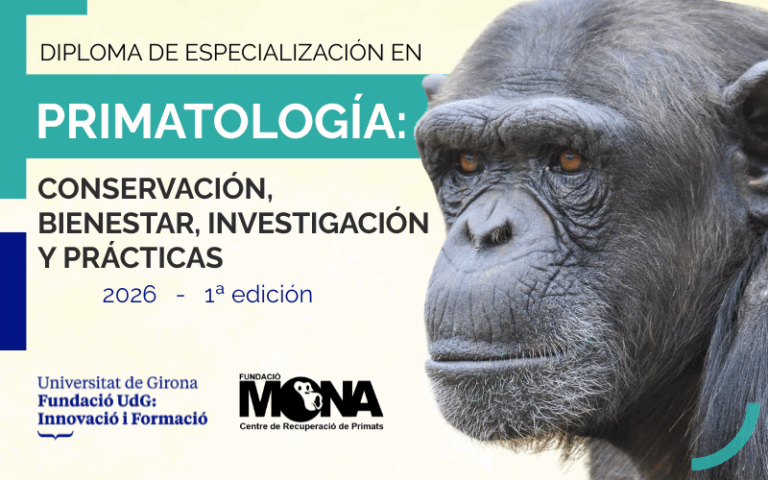MONA’s chimpanzees help science discover that yawns are contagious… even from a robot!
Can a chimpanzee catch a yawn… triggered by an android? The answer is yes. This is confirmed by an innovative study recently published in the journal *Nature Scientific Reports*, led by researchers Ramiro Joly-Mascheroni and Beatriz Calvo-Merino from City St George’s University of London, in which the chimpanzees rescued by Fundació MONA played a leading […]
Published: 06.06.2025Can a chimpanzee catch a yawn… triggered by an android? The answer is yes. This is confirmed by an innovative study recently published in the journal *Nature Scientific Reports*, led by researchers Ramiro Joly-Mascheroni and Beatriz Calvo-Merino from City St George’s University of London, in which the chimpanzees rescued by Fundació MONA played a leading role. The discovery opens a new window into the understanding of behavioral contagion mechanisms and the role of empathy and motor simulation in non-human species.
This world-first study involved presenting chimpanzees with an android designed to mimic human expressions, which, in one of the study conditions, yawned in front of them. The results were surprising: the chimpanzees not only responded with yawns of their own, but in many cases began behaviors related to rest, such as gathering nesting materials or lying down to sleep.

“The goal was to explore whether yawn contagion depends on the agent performing the action, or if merely observing the gesture is enough to trigger the response, even if it comes from an artificial being,” explains Dr. Ramiro Joly. “Our findings suggest that the simple act of perceiving a yawn —even from a robot— can activate not only an automatic motor response in the observer, but also associated states such as drowsiness.”
The study not only offers a fascinating glimpse into chimpanzee social cognition, but also raises new questions about how humans and non-humans process the actions of artificial agents. According to Joly-Mascheroni and Calvo-Merino, this type of contagion “seems to go beyond simple motor imitation. It’s almost unavoidable, unlike other social actions like clapping or laughing.”
This work demonstrates the importance of interdisciplinary research, bridging fields as diverse as primatology, psychology, and robotics.
You can read the full article on the Nature website:
https://www.nature.com/articles/s41598-025-98639-z





